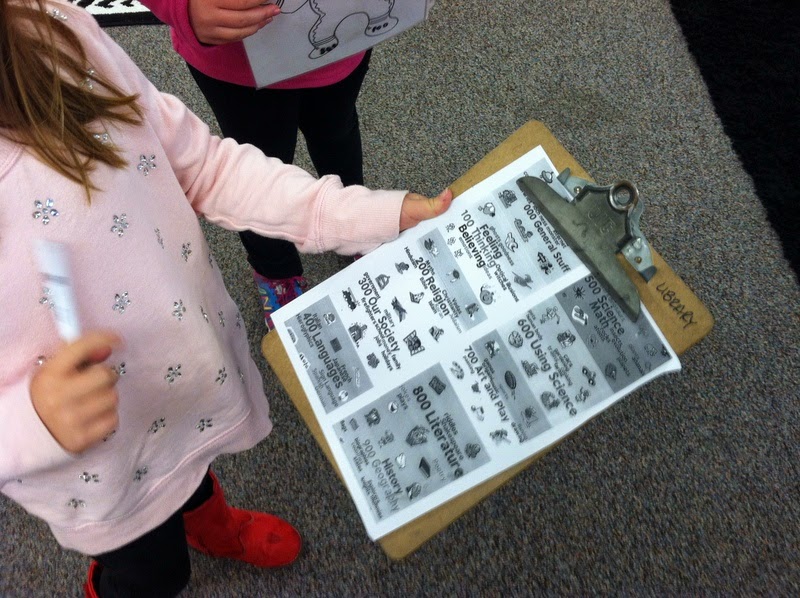Ready to let the gingerbread man loose in your library?
Our students loved learning about the various neighborhoods or sections in the nonfiction section of the library with this gingerbread-themed scavenger hunt!
First, we read The Library Gingerbread Man written by Dotti Enderle and illustrated by Colleen M. Madden. I absolutely adore this tale! I had the kids tell their neighbors what they knew about the original story of The Gingerbread Man before reading and after we read we compared the two.
We also sequenced the characters who chased the gingerbread man through the library after reading.
In the story, the gingerbread man escapes from his book in the 398.2 neighborhood and is chased through the library by various characters that escaped from other neighborhoods in the nonfiction section. To get the kids up and moving and familiar with some of the neighborhoods in the nonfiction section of the library, I sent the kids on a scavenger hunt to find six gingerbread men that were loose in the nonfiction section.
I colored one part of each gingerbread man on purpose. I hid these six gingerbread men in various areas in the nonfiction section. One was hidden in each of the sections from 400 through 900.
Each of my six teams were given a clipboard with a blank gingerbread man, a set of clues, and a cheat sheet for the Dewey Deciman system.
Gingerbread man on the front of the page. I put each gingerbread man inside a plastic sleeve so I could reuse them for each class.
My sixth graders wrote clues (4 lines each with ABCB rhyme scheme) that would help each team find the gingerbread men that were hiding in the nonfiction section. I highlighted one clue for each team (six clues in all which correlate with the six neighborhoods that the gingerbread man runs through in the book) and told the teams to start with that clue and work through each of the clues in order. That way, the teams stayed separated for the most part.
I found this visual Dewey Decimal classification and copied it for every group to use to solve their clues.
When a group found a gingerbread man, they wrote the correct hundreds classification on the colored part of the hidden gingerbread man. For example, if a gingerbread man was hidden in the 700's and that gingerbread man had his left mitten colored, the team wrote the number 700 on the left mitten of their gingerbread man on their chart.
Here is a team finding their gingerbread man in the 400's where the word wizard hopped out of his book in the story.
Gingerbread man hiding in the 700's where the origami books can be located...just like the origami bird that chased the gingerbread man in the story.
Students reading their next clue.
I had second grade label each nonfiction section with the correct hundreds number, but for K and 1st I modified the lesson. To help them become familiar with the neighborhoods in the nonfiction section, they only had to find the gingerbread man and color in the part of the gingerbread man that was also colored on the hidden one. That way, they didn't have to identify the hundreds section, only find it.
If you try out this lesson in your library and have any questions, ideas, or suggestions, please leave a comment.
Happy hunting!








